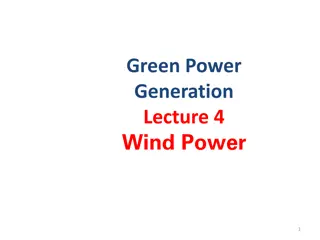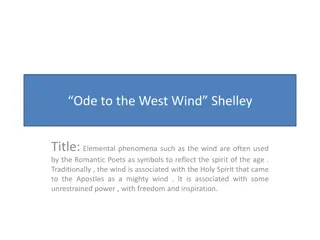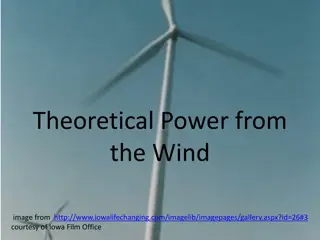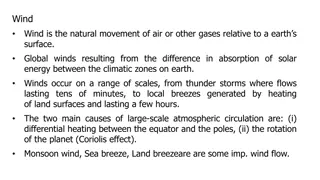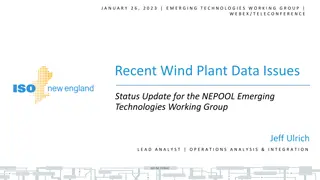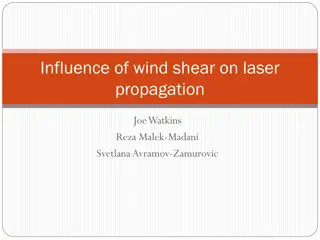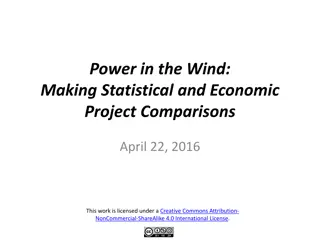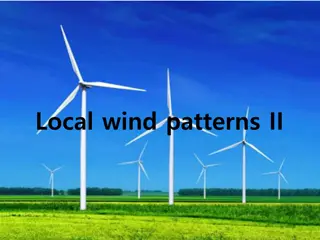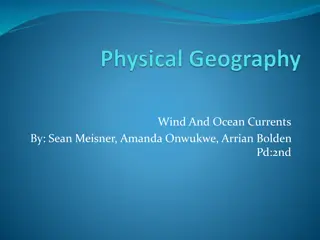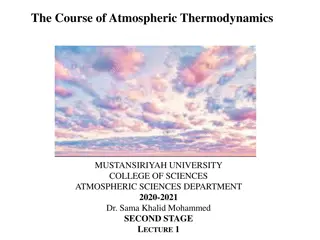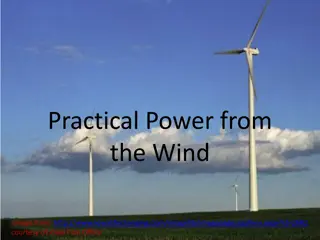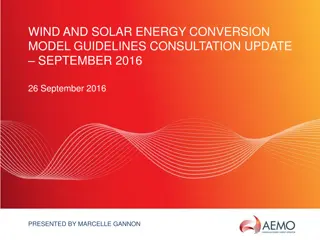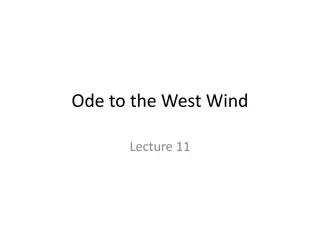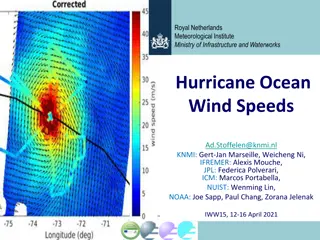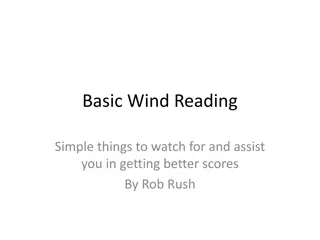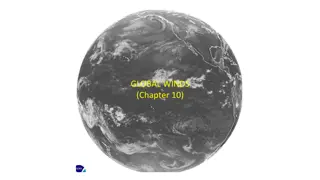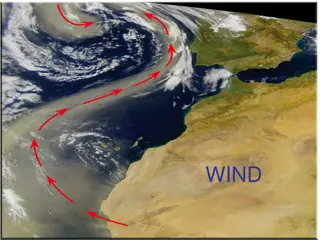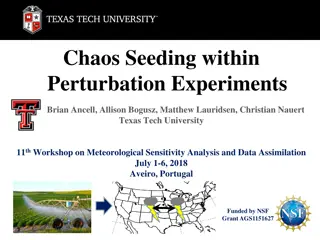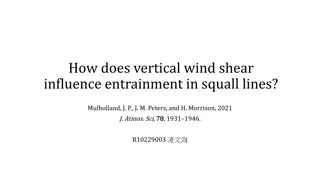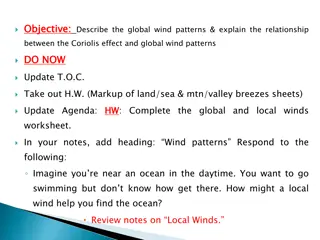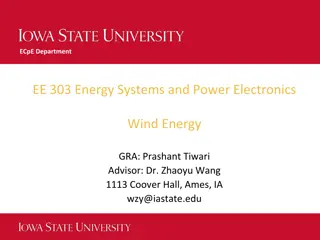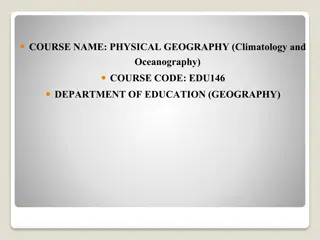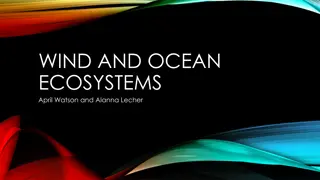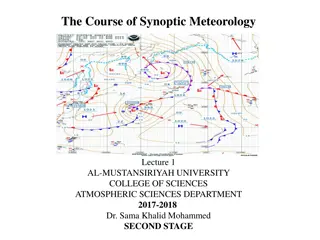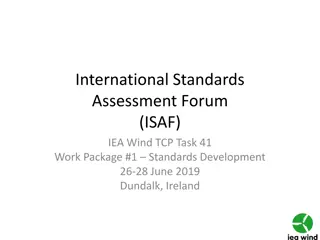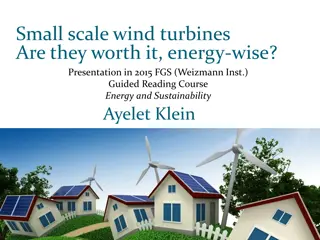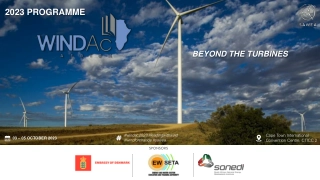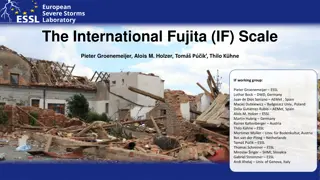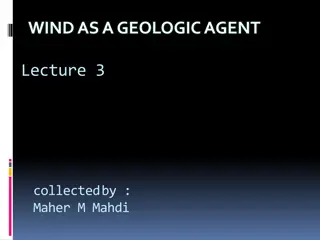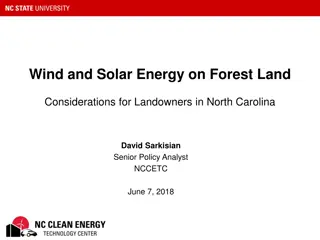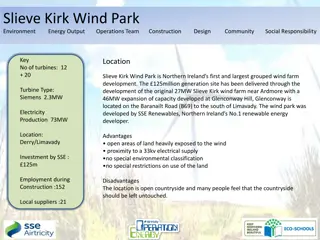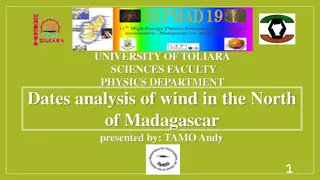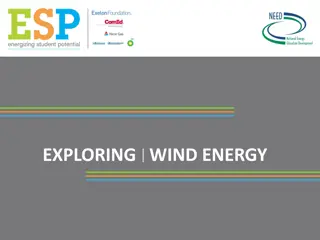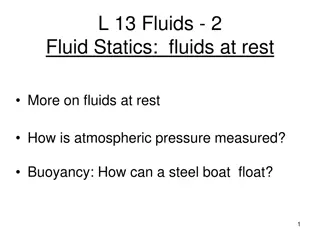Understanding Wind and Atmospheric Phenomena
Wind is air in motion driven by the uneven heating of the Earth's surface. Learn about key concepts such as anemometers, isobars, pressure gradients, the Coriolis Effect, and jet streams, which all play crucial roles in meteorology. Winds are named based on their direction, and jet streams influence storm development. Explore how these factors shape weather patterns and impact our environment.
Download Presentation

Please find below an Image/Link to download the presentation.
The content on the website is provided AS IS for your information and personal use only. It may not be sold, licensed, or shared on other websites without obtaining consent from the author. Download presentation by click this link. If you encounter any issues during the download, it is possible that the publisher has removed the file from their server.
E N D
Presentation Transcript
Wind: Air in motion produced by the uneven heating of earth s surface by the sun
Anemometer: A device that measures wind speed
*****KEY CONCEPT***** Winds are named for the direction that they are coming from Example: A north wind in NYS usually brings cold air because it comes from Canada/the north.
Isobar: Line on a weather map connecting places with the same atmospheric pressure
Pressure gradient: Rate of change in air pressure between two points on a map Closer isobars= higher gradient=faster the winds
Coriolis Effect: Apparent bending of the winds, ocean currents or objects along Earth s surface; caused by Earth s rotation
Without rotation, winds would blow straight from areas of high pressure (North Pole) to areas of low pressure (equator)
Jet Stream: Currents of very fast winds in the stratosphere; separates hot air from warm air from cold air
Jet streams blow from west to east in mid-latitudes
Jet streams are important because they influence the development and movement of storm systems
Planetary Wind Belts (ESRT 14): Latitude zone of prevailing wind conditions Prevailing winds: Wind that blows more often from one direction than from any other
Difference in air pressure and prevailing winds can often mean different weather conditions
Much of the contiguous US is affected by planetary winds that blow from the southwest to the northeast As a result, weather in the US generally moves from SW to NE
Example: In the winter, the northern portions of the US often get cold weather conditions from Canada caused by northerly prevailing winds. In the summer, the same regions usually have more southerly prevailing winds
Monsoons: A regular and extreme weather change caused by the shift of wind and pressure belts, which is directly related to the changes in seasons
Example: India- when winds are off the land, India experiences a drought. When winds are off the water, India experiences high amounts of rain
Cool places usually have relatively high air pressure and warmer places have relatively lower air pressure
****KEY IDEA**** Winds always blow from areas of high pressure to areas of low pressure
During the day, land heats up quicker than water Warm air rising over land causes low pressure, a sea breeze and clouds over the land. This happens during the day.
Warm above slowly cooling water at night creates low pressure, a land breeze and clouds over the water. This happens at night.
Surface ocean currents are caused by wind blowing over the oceans and transferring energy to the water- huge impact on climate!


